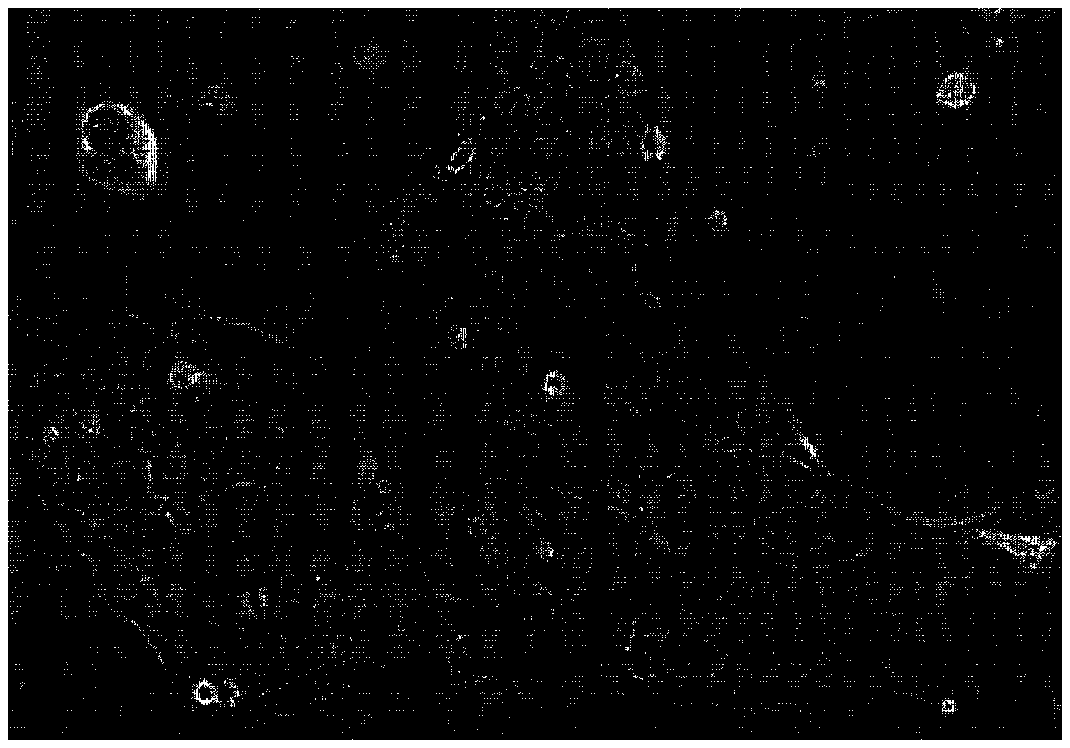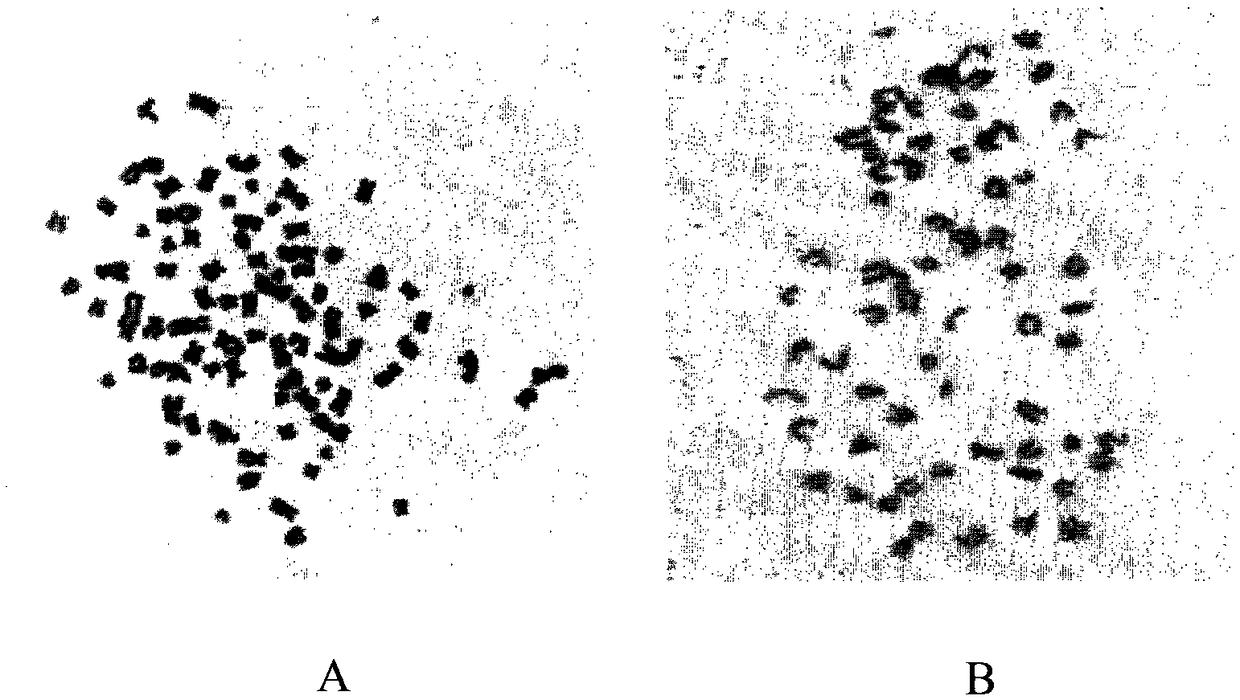Human pancreatic cancer neural invasion cell line
A technique for neural invasion and pancreatic cancer, applied in the field of cell lines, to achieve the effects of stable multiple passages, rich cell bank, and stable traits
- Summary
- Abstract
- Description
- Claims
- Application Information
AI Technical Summary
Problems solved by technology
Method used
Image
Examples
Embodiment 1
[0032] The preparation of embodiment 1HPNI-1 cell line
[0033] Nude mice: 5, female, weighing 16.0±1.0 g, aged 5 weeks, raised in SPF environment.
[0034] A fresh resection specimen of clinical pancreatic cancer nerve invasion (male, 56 years old, pancreatic cancer nerve invasion) was obtained from Shanghai Changhai Hospital, and immediately immersed in pre-cooled sterile HBSS buffer (containing 500 U / ml penicillin G, 500 μg / ml sulfuric acid chain Mycin and 1.50 μg / ml Amphotericin B). In the biosafety cabinet, wash the specimen with fresh sterile HBSS buffer solution, cut into small pieces of 20-50 mg, and puncture and inoculate subcutaneously in the axillary back of nude mice. After inoculation, the animals were in good health and behaved normally. 40 days after inoculation, small tumor nodules were found under the skin of the inoculation site by touch, and the small nodules began to grow significantly 50 days after inoculation, and the tumor volume exceeded 300mm by 70 d...
Embodiment 2
[0037] The biological characteristic of embodiment 2HPNI-1 cell line
[0038] The invention adopts RPMI 1640 culture solution containing fetal bovine serum and insulin to cultivate HPNI-1 cells, so that the HPNI-1 cells can grow long-term in vitro and pass stably. When the cells are passed to more than 20 generations, the cell properties are gradually stabilized, and the relevant biology, genetics and tissue source identification are carried out until the 50th generation has the same stable properties. According to the experimental observation and verification, the cells grown in vitro are epithelial-like. Under the inverted microscope, the cells adhere to the wall and grow evenly, with different sizes and paving stone-like shapes. grow. Genetic studies have confirmed that the cells are aneuploid, with severe chromosome number and structural aberrations, consistent with the genetic characteristics of malignant tumors.
[0039] (1) Morphological observation
[0040] The cult...
Embodiment 3
[0047] Embodiment 3 HPNI-1 cell line is applied to establish animal model
[0048] The HPNI-1 cells were cultured and collected in vitro, and subcutaneously inoculated into BALB / C nude mice (5.0×10 6 cells, the cell suspension and Matrigel were mixed at a ratio of 1:1, and a total of 7 animals were inoculated), and the body weight and tumor size of the animals were investigated twice a week. About 5 days after inoculation, tumors began to form and grow. Tumor growth curves were drawn, where tumor volume = (length x width x width) ÷ 2. The experiment ended on the 39th day, when the tumor volume was 2013.9±263.5mm 3 , and the animals were euthanized with a tumor weight of 1.89±0.75 g. It can be seen that HPNI-1 cells can form tumors in nude mice and have tumorigenicity.
[0049] The excised specimen of Example 1 and the tumor formed by HPNI-1 cells subcutaneously inoculated in nude mice 20 days later were subjected to paraffin-embedded sections and HE staining. The results ...
PUM
 Login to View More
Login to View More Abstract
Description
Claims
Application Information
 Login to View More
Login to View More - R&D
- Intellectual Property
- Life Sciences
- Materials
- Tech Scout
- Unparalleled Data Quality
- Higher Quality Content
- 60% Fewer Hallucinations
Browse by: Latest US Patents, China's latest patents, Technical Efficacy Thesaurus, Application Domain, Technology Topic, Popular Technical Reports.
© 2025 PatSnap. All rights reserved.Legal|Privacy policy|Modern Slavery Act Transparency Statement|Sitemap|About US| Contact US: help@patsnap.com



